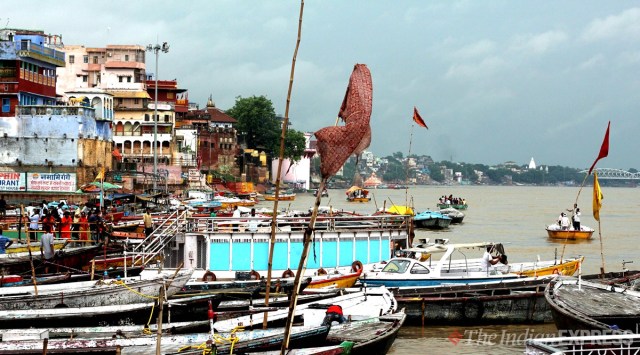Over one-forth of govt-owned waterbodies in Ganga basin dried up: Survey
As per the census survey of ponds, tanks, and lakes in the river basin, the water bodies in Uttar Pradesh, Jharkhand, Uttarakhand, Bihar and West Bengal have dried up.
 Ganga river in Varanasi (Express Photo by Anand Singh)
Ganga river in Varanasi (Express Photo by Anand Singh)A new survey revealed that over one-fourth (28 percent) of the government-owned waterbodies in the Ganga basin are dried up. As per the census survey of ponds, tanks, and lakes in the river basin, the water bodies in Uttar Pradesh, Jharkhand, Uttarakhand, Bihar and West Bengal have dried up. The findings show that 16 per cent of the water bodies in the Ganga basin were eutrophic, and only 56 per cent were functional.
The survey was conducted by the Quality Council of India (QCI), an autonomous body established by the Government of India in partnership with ASSOCHAM, CII and FICCI. The team studied 578 water bodies and found that 411 were surrounded by human settlement
In Uttar Pradesh, the QCI team assessed 329 water bodies and found that 37 per cent have dried up. About 93 per cent of the water bodies don’t have any type of fencing; 53 per cent of functional water bodies were found to be not turbid; 48 per cent of water bodies had solid waste around them, and 69 percent water bodies have settlements around them. Ghazipur district has the maximum number of functional water while Bhadohi District has a maximum number of eutrophic water bodies.
In Jharkhand, out of the 53 water bodies assessed, 13 per cent have dried up while 72 per cent were functional, and 15 per cent were eutrophic. About 96 per cent of the water bodies don’t have any type of function while 85 per cent are surrounded by solid waste.
In Bihar, of the 39 water bodies assessed, 31 per cent have dried up, 31 per cent were eutrophic, while 38 per cent were functional. In West Bengal, of the 147 water bodies assessed, 11 per cent have dried and 16 per cent were eutrophic and 73 per cent were functional. About 90 per cent of the assested water bodies don’t have any fencing and 63 per cent have solid waste around them.
In Uttarakhand, the team assessed 10 water bodies out of which 5 had dried up, 3 were functional while 2 were eutrophic.
The purpose of the study was to do a 100 per cent mapping of all government-owned water bodies in Ganga districts for improvement and rejuvenation of water bodies that are either dried up or working at less than full efficiency.







